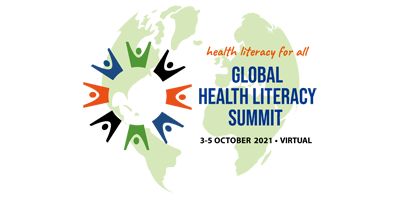Abstract Preview
Abstract
|
Title Building a health literacy indicator from the first demographic health survey in Angola |
|
Type Oral Presentation Only |
|
Theme Global Health Literacy Summit 2021 |
|
Topic Research and new measures for health literacy |
Authors
|
Main Author Neida Ramos1 |
|
Presenting Author Neida Ramos1 |
|
Co-Author Inês Fronteira1 Maria Martins1 |
Authors' Institution
|
Department / Institution / Country Global Health and Tropical Medicine / Instituto de Higiene e Medicina Tropical, Universidade NOVA de Lisboa / Portugal1 |
|
Abstract Content (abstracts should be written in Size 11 font, Arial font style) Background: Health literacy is a determining factor for the health of the population and paramount for their ability to decide correctly and effectively on health issues. Low health literacy can be a silent source of major problems for citizens and their governments. This study aimed at computing a health literacy indicator for Angola using the health literacy framework from World Health Organization conceived for development countries and analyze demographic characteristics related with that indicator. Method: We used data from 19,785 individuals aged between 15 and 49 years who participated in the first demographic health survey conducted in Angola in 2015 and that included questions on health literacy according to its definition by the Institute of Medicine. The health literacy indicator was computed using Factor Analysis (principal component analysis), using ten variables related to the four dimensions of health literacy (access, understanding, interpretation and decision-making). Logistic regression was employed to describe the relationship between demographic characteristics and the computed health literacy indicator, while controlling for possible confunders. Results: About 31,4% of respondents had high prevalence of health literacy. Health literacy was higher in individuals between 20 and 24 years of age (33.9%); (odds ratio, OR 1.45; 95 % confidence interval, CI 1.25–1.69). Women had lower health literacy levels (27.2%) when compared to men (44.9%), (OR 0.61; 95% CI, 0.55-0.67). Individuals with a higher level of education had a higher prevalence of health literacy (65%), as well as individuals living in urban areas (44%), (OR 0.19; 95% CI, 0.17-0.21) when compared to those living in rural areas (7%). Conclusions: This is the first investigation into health literacy conducted in a large-scale in a Portuguese-speaking African country, where data from nearly twenty thousand adult people were analyzed. This investigation made possible to find a classificatory measure of health literacy in Angola, applied on a large scale, based on the conceptual aspects of the definition of health literacy presented by the American Institute of Medicine. |
|
Other Topics Preferences(Maximum of two topics only and please note that the Program Committee reserves the right to decide on the final presentation format.) - Health literacy and public health promotion - Health literacy in developing countries |
Requires Audio or Video system for Presentation?: Yes
